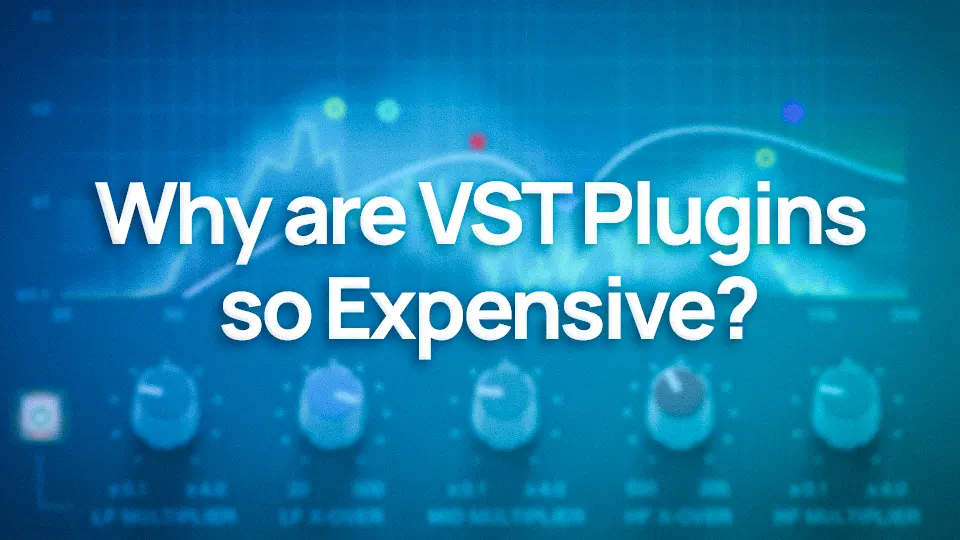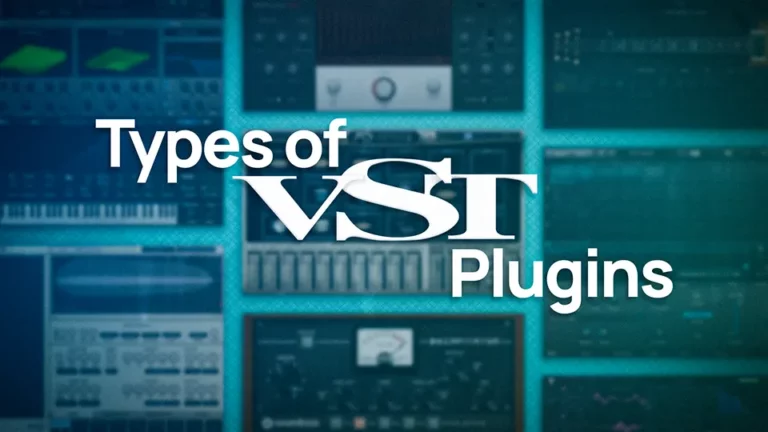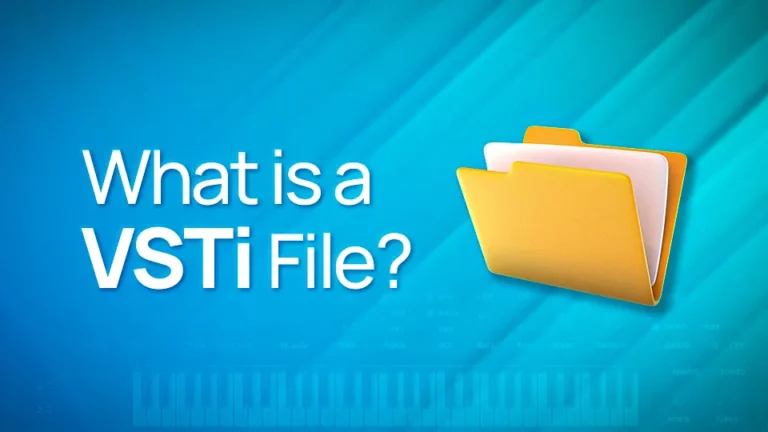In the music production world, VST plugins are like the secret sauce that elevates your tracks from mediocre to mind-blowing. But, let’s be real, have you ever glanced at the price tag of one of these babies and thought to yourself “Why are VST Plugins so Expensive?” If that’s the case, worry not. We’ll reveal the reasons behind the high price in this article.
From development and licensing costs to quality and features, and even market demand, we’ll explore all the factors that contribute to the high cost of VSTs. And, because we’re not heartless robots, we’ll also give you tips on finding good deals and evaluating the value of a VST plugin.
So, whether you’re a music producer looking to expand your toolkit, or just a curious cat wanting to know more about these digital wonders, this article will give you a better understanding of why VST plugins can be so expensive and if they’re worth the investment.
Let’s face it, we all love a good deal, and just because a VST plugin is expensive, doesn’t mean it’s the only option for achieving great sound. We’ll also give you the lowdown on affordable alternatives and even some free VST plugins that can provide similar results as their more expensive counterparts.
So, before you empty your bank account on the latest and greatest VST, be sure to check out our tips on how to get the most bang for your buck.
Why are VST Plugins so Expensive?
As we mentioned, VST plugins play a crucial role in music production. But, the question is, why are they so expensive?
Here, we will explore the various factors that contribute to the high cost of VSTs, from the development and licensing costs to the quality and features, support and updates, market demand, and brand reputation. We will break it down in simple terms so you can have a better understanding of the reasons behind the high cost of these digital wonders.
Development and Licensing Costs
One of the main reasons why VST plugins are so pricey is the development and licensing costs that go into creating them. Developing a VST plugin is no walk in the park, it’s more like a marathon through a desert. It starts with research and development, where the team behind the plugin must come up with a concept, design, and test the plugin to make sure it works as intended. This process can take months or even years to complete and requires a team of programmers, sound designers, and testers that are not cheap to hire.
Once the plugin is developed, the next step is to obtain the necessary licenses to use certain sounds, instruments, or technology in the plugin. These licenses can be very expensive, and the cost must be passed on to the consumer. For example, a plugin that uses a particular software synthesis engine or samples from a specific instrument must pay a licensing fee to use those sounds. This cost can add up quickly and contribute to the overall expense of the plugin.
Moreover, the maintenance of the plugin is also a factor, as the plugin must be constantly updated to be compatible with new versions of the software and to fix any bugs. This also entails additional costs for the development team.
In summary, the development and licensing costs are a significant factor in why VST plugins are so expensive. The process of creating a plugin is time-consuming and resource-intensive, and the necessary licenses can add up quickly. These costs must be passed on to the consumer, making the plugin more expensive. As a consumer, it’s important to understand that the high cost of a VST plugin is not just for profit, but also reflects the amount of work and resources that went into creating it. And remember, a good plugin is like a good wine, it only gets better with age.
Quality and Features
Creating a VST plugin is like building a spaceship, it’s not easy and it’s not cheap. The developers have to put a lot of time, effort, and money into making these digital wonders.
We’re talking about features like knobs, buttons, and sliders that make the plugin more powerful and versatile. It’s like the difference between a bicycle and a motorcycle, one can get you from point A to point B, but the other will make the ride more enjoyable.
But it’s not just about the number of features, it’s also about the quality. Do you know why that fancy synthesizer VST plugin is so expensive? Because it’s got the sound of a real analog synth, the warmth, and the character that only hardware can provide. And that drum machine plugin? It’s got the sound of the original drum machines, the ones that defined the sound of music in the 80s and 90s.
And some plugins even emulate specific hardware instruments or effects, like that vintage synth or that tape machine. And let me tell you, it’s not easy to replicate the sound of the original hardware. It’s like trying to make a decent wine in your kitchen. It’s possible, but it’s not easy and it’s not cheap.
Support and Updates
When it comes to buying a VST plugin, it’s not just the product that you’re paying for, it’s also the support and updates that come with it. These little extras can make a big difference in your music production experience.
First off, there’s customer support. Think of it like having a personal helper, someone you can turn to when you’re stuck or have questions. They can help you set up the plugin, troubleshoot any problems, and even give you tips on how to get the most out of it. In addition, let’s be honest, we all need a little help from time to time, especially when it comes to technology.
Then there are updates, like a tune-up for your plugin. These updates can include bug fixes, new features, and compatibility with newer software versions. It’s like getting a new version of your favorite toy, it keeps things fresh and exciting, and most importantly, it ensures that the plugin continues to work well and stays relevant for a longer period of time.
Now, you might be thinking, “Hey, why should I pay for these extras?”
And here’s why. Providing customer support and regular updates incurs additional costs for the developers. It’s like when you go to a restaurant, you’re not just paying for the food, you’re also paying for the service and the atmosphere. And just like a good restaurant, a good VST plugin should come with good service and regular updates.
In a nutshell, when you purchase a VST plugin, you’re not just buying a product, you’re also buying peace of mind, you’re buying the ability to get help when you need it, and you’re buying the assurance that your plugin will continue to work well and stay relevant for a long time. And that my friends, is worth every penny.
The Market and Demand for VST Plugins
Another reason why VST plugins can be so expensive is the market and demand for them. The market for VST plugins is highly competitive, and there are many different developers creating a wide range of plugins. This competition can drive up the prices of plugins as developers try to differentiate themselves and justify their higher prices.
Demand also plays a significant role in the cost of VST plugins. If there is a high demand for a particular plugin, developers can charge more for it. This is similar to how the price of a concert ticket can increase if the demand for the concert is high.
It’s also worth noting that some VST plugins are developed by small teams or even individuals, they don’t have the same resources and economies of scale as the larger companies and that makes the final price higher.
In summary, the market and demand play a significant role in the cost of VST plugins. The highly competitive market and the need to constantly update and improve plugins can drive up costs. Additionally, if there is a high demand for a particular plugin, developers can charge more for it. As a consumer, it’s important to understand that these factors contribute to the high cost of VST plugins and to evaluate the value of a plugin based on the features and sounds it offers and the developer’s reputation.
Brand Reputation and Marketing Expenses for Companies That Develop VST Plugins
Last but not least, brand reputation and marketing expenses can also contribute to the high cost of VST plugins. Brand reputation is important in any industry, and the music production industry is no exception. Developing a good reputation in the market can take a lot of time, effort, and resources.
Companies that have a good reputation in the market can charge more for their products because their customers trust their brand and know that they are getting a quality product. As a result, they are willing to pay more for the plugin.
Marketing expenses also play a role in the cost of VST plugins. In order for a plugin to be successful, it needs to be marketed to the right audience. This can include advertising, social media marketing, and even sponsoring events. These expenses can add up quickly, and the costs must be passed on to the consumer.
Moreover, some VST plugin developers invest in hiring well-known sound engineers, music producers, or other industry professionals to promote and vouch for their products. This can add to the price of the plugin, but it also gives the plugin a level of credibility and reputation in the market.
In conclusion, brand reputation and marketing expenses can contribute to the high cost of VST plugins. Companies that have a good reputation in the market can charge more for their products, and the costs of marketing and promoting a plugin can add up quickly. As a consumer, it’s important to consider the brand reputation and marketing expenses when evaluating the value of a VST plugin and to look for reviews, testimonials, and trusted sources in the industry.
How Much Does it Cost to Make a VST plugin?
Creating a VST plugin is no small feat, and it’s not cheap either. Have you ever wondered how much it costs to make one of these digital wonders?
We’ll take a look at the various costs involved in creating a VST plugin, from research and development to licensing, sound design, programming, quality assurance, testing, and even marketing and distribution expenses. We’ll break it down in simple terms so you can have a better understanding of the costs that go into creating a VST plugin, and how it affects the final price.
Research and Development
Research and development is the first step in creating a VST plugin and it’s also one of the most important and expensive parts of the process. During the research and development phase, the team behind the plugin must come up with a concept, design, and plan for the plugin. This process requires a lot of time and resources, including the hiring of professionals with specialized skills and knowledge in sound design, programming, and user interface design.
The research and development process also includes the gathering of information on the current market, the needs of the target audience, and the features and functions of similar products. This helps the development team to understand what the customers want, and how to create a product that meets or exceeds their expectations. This research is crucial to ensure that the plugin is desirable, functional, and user-friendly.
Moreover, the research and development process can also include the creation of prototypes and testing of different versions of the plugin, to ensure that it works as intended. This process can take several months or even years to complete, and it requires a significant investment in time and resources.
Licensing
Licensing is another important and costly aspect of creating a VST plugin. In order to use certain sounds, instruments, or technology in the plugin, developers must obtain the rights to use them. This process is known as licensing, and it can be a significant expense for the developer.
There are different types of licenses that a developer can obtain, including:
- Sample-based licenses
- Instrument-based licenses
- Technology-based licenses
Sample-based licenses give the developer the right to use a specific sample, or a set of samples, in their plugin. Instrument-based licenses give the developer the right to use a specific instrument or sound in their plugin. Technology-based licenses give the developer the right to use a specific technology or algorithm in their plugin.
The cost of licensing can vary depending on the type of license and the specific sounds, instruments, or technology being licensed. It can range from a few hundred dollars for a small sample library, to several thousand dollars for a large and complex instrument or technology-based license.
Additionally, some licenses may also require ongoing payments, such as royalties, which can add to the overall cost of the plugin.
Sound Design and Programming in Creating a VST Plugin
Sound design and programming are crucial steps in creating a VST plugin, and they also come with a cost.
Sound design is the process of creating and recording sounds, such as samples and instruments, for the plugin. This process requires the use of specialized equipment, such as synthesizers, drum machines, and recording studios. The sound designer must have a deep understanding of sound and the ability to create unique and high-quality sounds.
Programming, on the other hand, is the process of creating the software that runs the plugin. This process requires the use of specialized programming languages and software development tools. The programmer must have a deep understanding of software development and the ability to create user-friendly and efficient software.
Both sound design and programming require a significant investment in time and resources. The sound designer must spend many hours recording and editing sounds, while the programmer must spend many hours coding and testing the software. Additionally, both sound design and programming require the hiring of professionals with specialized skills and knowledge.
Quality Assurance and Testing
Quality assurance and testing are critical steps in creating a VST plugin, and they also come with a cost.
Quality assurance, or QA, is the process of ensuring that the plugin meets certain standards of quality and performance. This process includes testing the plugin for bugs, compatibility issues, and overall functionality.
Testing is an important part of QA, and it includes testing the plugin under different conditions and with different software and hardware configurations. This ensures that the plugin works correctly and as intended in a variety of environments.
The QA process also includes user testing, where the plugin is tested by actual users to ensure that it is user-friendly and easy to use. User testing can help to identify any usability issues and provide feedback on how to improve the plugin.
Quality assurance and testing require a significant investment in time and resources. The QA team must spend many hours testing the plugin, and the testing process can be quite extensive, including various test cases and scenarios. Additionally, QA requires the hiring of professionals with specialized skills and knowledge in software testing and quality assurance.
Marketing and Distribution Expenses
Marketing and distribution expenses may not be as exciting as sound design or programming, but they are just as important for the success of a VST plugin. Once the plugin is developed and tested, it needs to be marketed and distributed to the target audience. This process can be quite expensive, and it requires a significant investment in time and resources.
Marketing expenses include advertising, social media marketing, and even sponsoring events. These expenses can add up quickly, and they’re necessary to make sure that the plugin is seen by the right people. It’s like trying to sell a book, if no one knows it exists, no one will buy it.
Distribution expenses include the cost of hosting the plugin on various platforms, such as digital marketplaces, and the cost of physical distribution, if applicable. These expenses are necessary to make sure that the plugin is available to customers in various locations, and on various platforms.
Do You Need Expensive Plugins to Make Great Sound?
We’ve talked about why are VST Plugins so Expensive, but do you really need to break the bank to make a great sound?
Here, we’ll explore the role of VST plugins in music production, the importance of a good workflow and techniques, affordable alternatives, and free VST plugins. We’ll also give you some tips on how to evaluate the value of a VST plugin. So, whether you’re a beginner or a professional, this section will give you a better understanding of how to make great sounds without breaking the bank.
The Role of VST plugins in Music Production
VST plugins play a crucial role in modern music production. They are software instruments and effects that can be used to enhance, alter, and manipulate sound. These plugins come in a variety of forms, including virtual synthesizers, drum machines, samplers, and effects such as reverb, delay, and compression.
VST plugins can be used in a variety of ways, depending on the type of plugin and the desired result. For example, a virtual synthesizer can be used to create new and unique sounds, while a compressor can be used to enhance the overall loudness and punch of a track.
The use of VST plugins can also help to save time and resources in the studio. Instead of having to record and manipulate sound using traditional analog equipment, VST plugins can be used to achieve similar results in a digital environment.
In addition, VST plugins can also help music producers to be more creative and experimental in their productions. The variety of available plugins gives producers a wide range of possibilities to explore, and it allows them to create soundscapes and textures that would be difficult or impossible to achieve with traditional equipment.
The Importance of a Good Workflow and Techniques
A good workflow and techniques can be just as important as the VST plugins themselves in achieving great sound. A workflow is a process of organizing and executing tasks in a logical and efficient manner. In music production, a good workflow can save time and help to prevent mistakes and errors.
One of the key elements of a good workflow is organization. This means keeping track of all the different elements of a project, such as samples, recordings, and MIDI files, and keeping them in a logical and easy-to-access location.
Another important aspect of a good workflow is the use of templates. Templates are pre-made projects or sessions that can be used as a starting point for new projects. This can save a lot of time and effort, as many of the basic elements, such as routing and effects, are already set up.
In addition to workflow, techniques also play a critical role in achieving great sound. This includes things like EQing, compression, and reverb techniques, which can help to shape and enhance the overall sound of a track.
Affordable Alternatives and Free VST Plugins
Just because VST plugins can be expensive, it doesn’t mean you have to break the bank to achieve a great sound. There are many affordable alternatives and even free VST plugins available that can provide similar results as their expensive counterparts.
Affordable alternatives are VST plugins that are more budget-friendly but still provide high-quality sound and features. These plugins may not have all the bells and whistles of the more expensive options, but they can still provide excellent results.
Free VST plugins are also a great option for those on a tight budget. These plugins are often created by independent developers and can be a great way to try out new sounds and effects without spending any money.
It’s important to note that while many free and affordable VST plugins are excellent, there are also some that may not be as high quality. It’s important to do your research and read reviews before using a free or affordable plugin.
How to Evaluate the Value of a VST Plugin
When it comes to purchasing a VST plugin, it’s important to evaluate the value of the plugin before making a decision. There are a few key factors to consider when evaluating the value of a VST plugin, including cost, features, and quality.
Consider the cost of the plugin
While a more expensive plugin may have more features and better sound quality, it’s important to consider whether or not the cost is justified. Are the additional features and sound quality worth the extra cost?
Consider the features of the plugin
What does the plugin offer and how will it enhance or improve your workflow? Are there any features that you don’t need or won’t use? Keep in mind that more features don’t always equal better value.
Consider the quality of the plugin
This includes things like the sound quality, the user interface, and the overall performance of the plugin. It’s important to read reviews and listen to demos before making a purchase, to get an idea of the quality of the plugin.
Extra Tips on How to Deal With the High Cost of VST Plugins
When it comes to dealing with expensive VST plugins, there are a few extra tips to keep in mind.
First, consider renting or borrowing the plugin before purchasing it. Many companies offer rental options for their VST plugins, which allows you to try out the plugin for a period of time before committing to a purchase.
Next, look for bundle deals or discounts. Many companies offer bundle deals that include multiple plugins at a discounted price. This can be a great way to save money on expensive plugins.
Consider using a free or affordable alternative as a substitute for an expensive plugin. Remember that there are many free and affordable VST plugins available that can provide similar results as their expensive counterparts.
Finally, always keep in mind that while a VST plugin may be expensive, it doesn’t necessarily mean that it’s the only option or the best option for your needs. Evaluate the value of the plugin, and whether or not it’s worth the cost.
Conclusion
VST plugins can be expensive but understanding the reasons why they are expensive can help us to make more informed decisions when it comes to purchasing them. We have discussed the various factors that contribute to the high cost of VST plugins, including development and licensing costs, quality and features, support and updates, the market and demand, and brand reputation and marketing expenses.
We also looked into the cost of creating a VST plugin, including research and development, licensing, sound design and programming, quality assurance and testing, and marketing and distribution expenses.
We also discussed that, while VST plugins can be expensive, they don’t have to be in order to achieve a great sound. We have provided tips on how to find affordable alternatives and free VST plugins, and how to evaluate the value of a VST plugin.
Lastly, we provided some extra tips on how to deal with the high cost of VST plugins, including renting or borrowing the plugin before purchasing, looking for bundle deals or discounts, and considering free or affordable alternatives.




